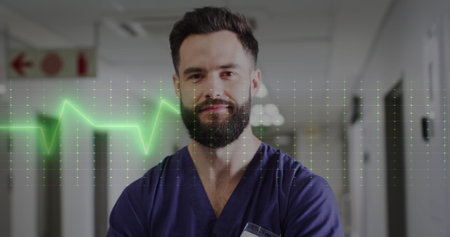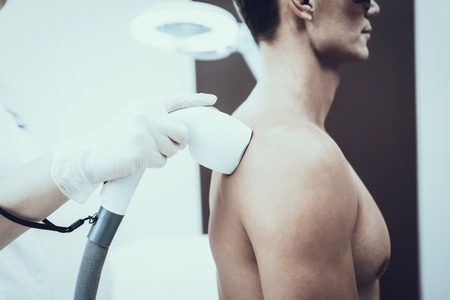Introduction to Laser Beard Shaping in the UK
In recent years, laser beard shaping has swiftly gained traction among British men, becoming a standout choice for those seeking sharp, well-groomed facial hair. Gone are the days when traditional razors and waxing were the only options for taming unruly beards. Today, many style-conscious gents across the UK are turning to laser technology for its precision, long-lasting results, and minimal fuss. The appeal lies not just in the immaculate lines and definition that laser treatments offer, but also in the promise of reducing daily maintenance and irritation caused by repetitive shaving. As grooming standards continue to evolve, laser beard shaping is quickly being seen as a modern solution that blends technological innovation with personal style—a testament to how British men are embracing new trends while valuing quality and safety.
UK Regulations Governing Laser Treatments
When it comes to laser beard shaping in the UK, understanding the regulatory landscape is essential for both practitioners and clients. Laser hair removal and shaping are classified as non-surgical cosmetic procedures, but they are still subject to strict oversight to ensure safety and quality.
Laws and Statutory Requirements
The use of lasers in cosmetic treatments, including beard shaping, falls under several pieces of legislation. The main legal frameworks include:
| Legislation/Guideline | Purpose | Applicability |
|---|---|---|
| Health and Safety at Work Act 1974 | Ensures workplace safety for staff and clients | All premises using lasers |
| Control of Artificial Optical Radiation at Work Regulations 2010 | Addresses specific risks associated with optical radiation (including lasers) | Treatment providers using laser devices |
| The Care Standards Act 2000 (Wales only) | Requires registration of clinics offering laser treatments | Clinics in Wales |
| Local Authority Byelaws (England & Scotland) | May require premises registration or licensing for laser use | Varies by council area |
Oversight Organisations
A number of bodies play an active role in regulating and monitoring laser treatments across the UK:
- CQC (Care Quality Commission): In England, the CQC regulates clinics that provide certain medical treatments involving lasers, though purely cosmetic beard shaping may fall outside their remit unless combined with medical procedures.
- Healthcare Improvement Scotland: This body regulates independent clinics offering cosmetic treatments in Scotland.
- HIW (Healthcare Inspectorate Wales): Registration is mandatory for all providers of laser treatments in Wales.
- Local Authorities: Councils often require licensing or registration, particularly in London boroughs and larger cities. Requirements can differ significantly depending on location.
- BACN (British Association of Cosmetic Nurses) & JCCP (Joint Council for Cosmetic Practitioners): These professional bodies set standards and maintain registers for qualified practitioners.
Your Responsibility as a Client or Practitioner
If you are considering laser beard shaping, check whether your chosen clinic is registered with the relevant authorities. For practitioners, staying informed about evolving regulations and undergoing recognised training is not just a legal requirement—its also key to providing safe, effective, and beautiful results that meet British standards.

3. Safety Standards and Practitioner Qualifications
When it comes to laser beard shaping in the UK, safety is absolutely paramount. As someone who has explored a variety of clinics and spoken with practitioners across London and beyond, I can attest that the best experiences always come from professionals who not only have a keen aesthetic eye but also solid credentials. Legally, anyone offering laser treatments must hold specific qualifications—typically an NVQ Level 4 or equivalent in laser and light-based hair reduction. This ensures that your practitioner is well-versed in both the technical operation of the equipment and the nuances of skin physiology.
Professional bodies like the British Association of Beauty Therapy & Cosmetology (BABTAC) and the Joint Council for Cosmetic Practitioners (JCCP) play a vital role here. These organisations set high standards for training and ongoing professional development, as well as strict codes of conduct. Many reputable clinics proudly display their membership with these bodies, which is always reassuring when you’re considering where to book your treatment.
What truly separates trustworthy clinics from less scrupulous operations is their commitment to upholding rigorous safety protocols. This goes beyond just qualifications; it’s about creating a holistic environment where risk assessment, patch testing, and thorough client consultations are all non-negotiable steps. For me, this attention to detail not only builds confidence but also makes the whole experience feel more bespoke and personal—something I value deeply when it comes to my own grooming choices.
4. Client Consultation and Patch Testing
One of the cornerstones of safe and effective laser beard shaping in the UK is a thorough client consultation paired with patch testing. These steps are not just regulatory formalities—they are essential for tailoring treatments to each individual, ensuring safety, and achieving optimal results.
Pre-Treatment Assessment
Before any laser touches your skin, reputable clinics will carry out a comprehensive assessment. This includes discussing your medical history, current medications, previous hair removal methods, and lifestyle factors that may affect the outcome or risk of side effects. It’s also a time to align expectations, discuss desired beard shape, and address any concerns you may have.
Skin Type Considerations
The Fitzpatrick scale is commonly used in the UK to classify skin types from I (very fair) to VI (deeply pigmented). Understanding your skin type is critical as it influences laser settings, choice of device, and risk management. Here’s a quick overview:
| Fitzpatrick Skin Type | Description | Laser Treatment Considerations |
|---|---|---|
| I-II | Fair, burns easily | Lower risk of pigmentation changes; standard settings usually safe |
| III-IV | Medium/Olive, tans gradually | Moderate risk; may require adjusted settings for safety |
| V-VI | Darker skin tones | Higher risk of hyperpigmentation; specialised lasers recommended |
The Importance of Patch Testing
A patch test is more than a mere formality—it’s a legal and ethical requirement in most UK clinics. This involves applying the laser to a small area of your jawline or neck at the intended treatment settings to observe how your skin reacts over 24-48 hours. This step helps identify potential adverse reactions such as excessive redness, blistering, or pigment changes before committing to full-face treatment.
In summary, proper client consultation and patch testing provide reassurance for both practitioner and client. They are pivotal in upholding British standards of care while delivering a personalised experience that feels both professional and genuinely considerate—something that makes all the difference when entrusting someone with your look.
5. Potential Risks and Aftercare Advice
Laser beard shaping is widely regarded as a safe and effective cosmetic procedure in the UK, especially when performed by trained professionals following strict local regulations. However, as with any aesthetic treatment, there are potential risks and side effects that anyone considering this service should be aware of.
Common Side Effects and How to Minimise Them
Most people experience only mild after-effects such as redness, slight swelling, or a tingling sensation around the treated area. These symptoms usually subside within a few hours to a couple of days. Less commonly, there might be temporary pigmentation changes or minor blistering—these are more likely if aftercare instructions aren’t followed diligently. To minimise risks, always choose a reputable clinic that adheres to UK safety standards and ensure your practitioner carries out a thorough patch test beforehand.
Essential Aftercare Tips for the British Climate
The UK’s often damp and unpredictable weather can play a role in how your skin recovers post-laser. Direct sunlight is rare, but UV exposure—even on overcast days—can aggravate sensitive skin after treatment. It’s essential to apply a broad-spectrum SPF 30+ sunscreen daily, even during those famously grey British afternoons. Additionally, avoid hot showers, saunas, or vigorous exercise for at least 24 hours post-treatment to prevent irritation.
Lifestyle Considerations for Optimal Results
Given the British love for outdoor activities—be it football in the park or long countryside walks—it’s wise to protect your face from wind and pollution while your skin heals. Gentle cleansing using fragrance-free products and keeping well-hydrated will also aid recovery. Finally, resist the urge to shave or use harsh exfoliants until your practitioner gives the all-clear; this ensures your newly shaped beard line remains sharp and free from complications.
By understanding these potential risks and following tailored aftercare guidance suited to the UK climate and lifestyle, you’ll give yourself the best chance of achieving a well-groomed, healthy beard with minimal fuss or discomfort.
6. Navigating Clinics and Making Informed Choices
When it comes to laser beard shaping in the UK, the abundance of clinics can feel overwhelming, but making an informed decision is crucial for both your safety and desired results. Start by ensuring any clinic you consider is registered with the Care Quality Commission (CQC) or relevant local authority, as this guarantees adherence to UK health and safety regulations. Don’t hesitate to request proof of practitioner qualifications—reputable clinics are always transparent about their training and certification in laser treatments.
Before booking a session, prepare a list of questions to ask during your consultation. It’s perfectly normal to inquire about the type of laser technology used (such as diode or Alexandrite lasers), aftercare procedures, potential side effects, and whether patch tests are provided as standard practice. An experienced practitioner will explain how UK standards for skin safety are met in their process, including tailored approaches for different skin types and hair textures.
Be mindful of red flags: steer clear of clinics unwilling to discuss regulatory compliance or those offering prices significantly below the local average—a sign they may be cutting corners on equipment or staff expertise. Take note if the premises appear unclean or if staff pressure you into quick decisions without adequate consultation time.
Your personal comfort is also vital; a good clinic will make you feel listened to and respected throughout your journey. Trust your instincts, do thorough research, and don’t rush your choice. Ultimately, choosing a registered, reputable clinic ensures that your experience with laser beard shaping not only enhances your appearance but does so with full respect for UK safety standards.


